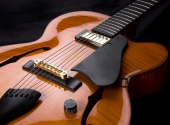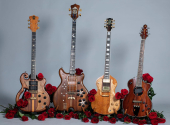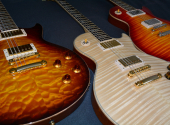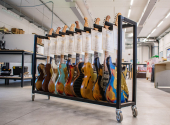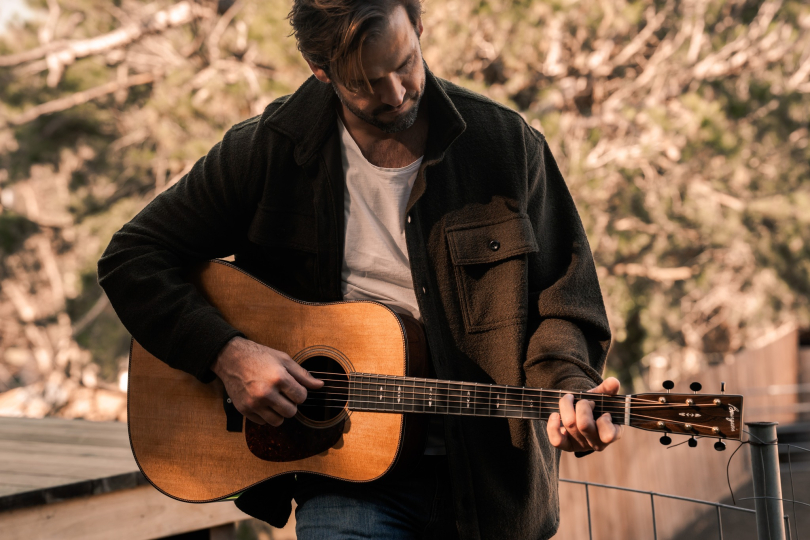
Legendary and Mythical Guitars #9: Bourgeois Guitars
Few events in the acoustic guitars world have stirred up such a wave of emotion and controversy as the news about Dana Bourgeois selling his iconic business to the Chinese company Eastman. What this means in terms of economics and marketing is more or less predictable. More importantly, it is a historical precedent representing a breakthrough in the hegemony of American manufacturers who seemed unshakable in their rule of the world. Something like Volvo being sold to the Chinese and Jaguar to the Indians.
First meeting
Karl, owner of Gitarren-Studio Neustadt in Germany, houses an impressive selection of Fender Custom Shop models. I couldn't stop looking at the beautiful pieces he owned. And when it came to acoustic guitars, he showed us a lot of great instruments in that category too. Not only Martin, Santa Cruz, Avalon, but also BSG and Rozawood, Halabica from Slovakia and other gems.
On top of that, he opened a suitcase containing an OM worth over 8000 Euros. There was a Bourgeois logo on its headstock. I remember thinking that they couldn't have named the guitar any better. Who else could afford an instrument for a quarter of a million than an exploiter and a bourgeois?
When I was collecting information about the manufacturer, I found that the creator of these iconic guitars is Dana Bourgeois. "Wow, a woman after all," I thought. Admittedly, you don't meet many women in the high-end guitar business. Then, when I was discussing American guitars with Roger, co-owner of the famous Brickhouse Guitars just outside Toronto, I said, "Roger, what about this Dana Bourgeois, have you ever talked to her? How did the lady get into making guitars?" I noticed something like amazement mixed with compassion on his face. Kind of like when a mental patient tells you their vision of the world and you don't want to upset or offend them.
I was a little concerned about that. I said, "What? Are you not supposed to talk about that?" And he went, "Well, you know, Mike, Dana's more of a guy." "So what," I said. "In an era of bearded female singers and executives with shaved legs in heels, it's not that unusual for a woman to feel like a man. Especially in such a traditionally male industry."
"Well, yeah, but he's always been a man and probably always will be," said Roger with that worried expression. So I've embarrassed myself a little, but whatever. It teaches you new things, like not to believe that the name Dana is always a female name.
Bourgeois history: with the support of a DIY dad, experienced players and an Asian giant
So this Dana guy was born in Westbrook, Maine, in '53. He says his interest in guitars began when he saw the Beatles on TV at the age of eleven. He built his first guitar right in his college dorm room, following instructions he read in Irving Sloan's Classical Guitar Construction. The master himself says that his father, a handyman who liked to work with wood, and his grandfather, who was an enthusiast for machines of all kinds, were great support in the early days.
In 1977, Dana decided that guitars would be his destiny and opened a workshop where he repaired, built and sold them. The country and bluegrass wave that produced the big names and today's legends of the genre meant, among other things, that Bourgeois met bluegrass icon Tony Rice, who we've mentioned in connection with Santa Cruz guitars. Rice became both an advisor and opponent to Dan.
True to the values of the country and bluegrass scene at the time, the guitar maker was trying to make dreadnought instruments. Much to his amazement, however, Rice liked the small-bodied model that we would now call the OM. This seemed to foreshadow the future fate of the master builder. The OM became his brand's bestseller, and it is precisely this shape that most guitarists associate with the Bourgeois name.
And since Eric Schoenberg, a renowned guitarist, played the OMs, and both Bourgeois and Martin wanted to make a guitar for him, the two suppliers created a joint model called the Schoenberg Soloist. Schoenberg then set up his own guitar production company and became OM's pioneer in the market. But of course, Dana Bourgeois also returned to dreadnoughts, and dreadnoughts and especially OMs still make up the vast majority of his production today.
In 1999, after the unsuccessful cooperation with Akai as a distribution partner, it seemed that Bourgeois as a guitar brand would disappear from the world for good. Ten years later, however, a surprising merger with the Chinese company Eastman Guitars took place, which put the financial and marketing wind in Bourgeois' sails. Today, it is an autonomous entity within the Eastman portfolio, and despite all the possible gloomy predictions, so far it seems to have been a step in the right direction for both parties.
Why Bourgeois?
What has made this luthier so admired by the guitar world and why are his guitars so well regarded? He is famous for several interesting techniques:
- a unique system of tuning the tops
- a unique bracing pattern that ensures balanced low and high frequencies
- a bolt-on neck and body connection that allows the neck to be removed without serious interference with the body or neck of the guitar
- wood torrefaction – a process of heating the wood, which has similar effects to the ageing of the wood over time
Add to this the extremely thin layers of aged nitrocellulose lacquer, the use of relatively rare Adirondack spruce that can still be found in Maine, and (as is appropriate for this type of instrument) the extreme attention to detail.
Bourgeois makes about 400 guitars a year, with Dana still personally inspecting and approving each top.
What do they offer?
The product range is divided into five basic model lines. In all of them, we find mainly OM models and dreadnoughts, while the design remains true to the American guitar tradition. Simple headstock lines, few decorative elements – basically what you would call a "cowboy guitar".
Touchstone is the newest line, whose tops are prepared in the USA and sent to Beijing, where the rest of the guitar is made in Eastman's manufacturing facilities, and then the instrument travels back to the USA where it is carefully inspected and tested before it goes on sale. As for the materials, they are Alaskan Sitka spruce on the top and rosewood on the back and sides.
The Professional series is characterised by mahogany back and sides in combination with spruce tops. But we can also find a full mahogany model or a dreadnought in the well-proven spruce-palisander combination.
Heirloom is a model line dominated by adirondack tops. Adirondack is a species of spruce, also called red spruce, that grows in North America. It is a strong material and has been used for guitars for many years. Not all areas where this tree grows provide the right wood for making musical instruments. But of course, guitar makers know where to choose.
The Legacy Series is a kind of collection of successful models from Bourgeois history. It includes the Soloist model and the exclusive Odyssey model with bevelled armrest, cutaway and neck inlays.
Aged Tone is a line of guitars from artificially "aged" materials. The goal here is to achieve both the sound and look of a real vintage guitar that you might inherit from your father or grandfather. As you know, Einstein proved that time is relative. Bourgeois Guitars are well aware of this, so they have made the time for "guitar maturing" go in the "fast-forward" direction. Thus, "fast-ageing" adirondack is used for the tops, and to further emphasise the "vintage look", only real, organic glue is used.
In addition to these model lines, you can order your dream instrument in the custom shop, as is usual for small-scale manufacturers of luxury guitars.
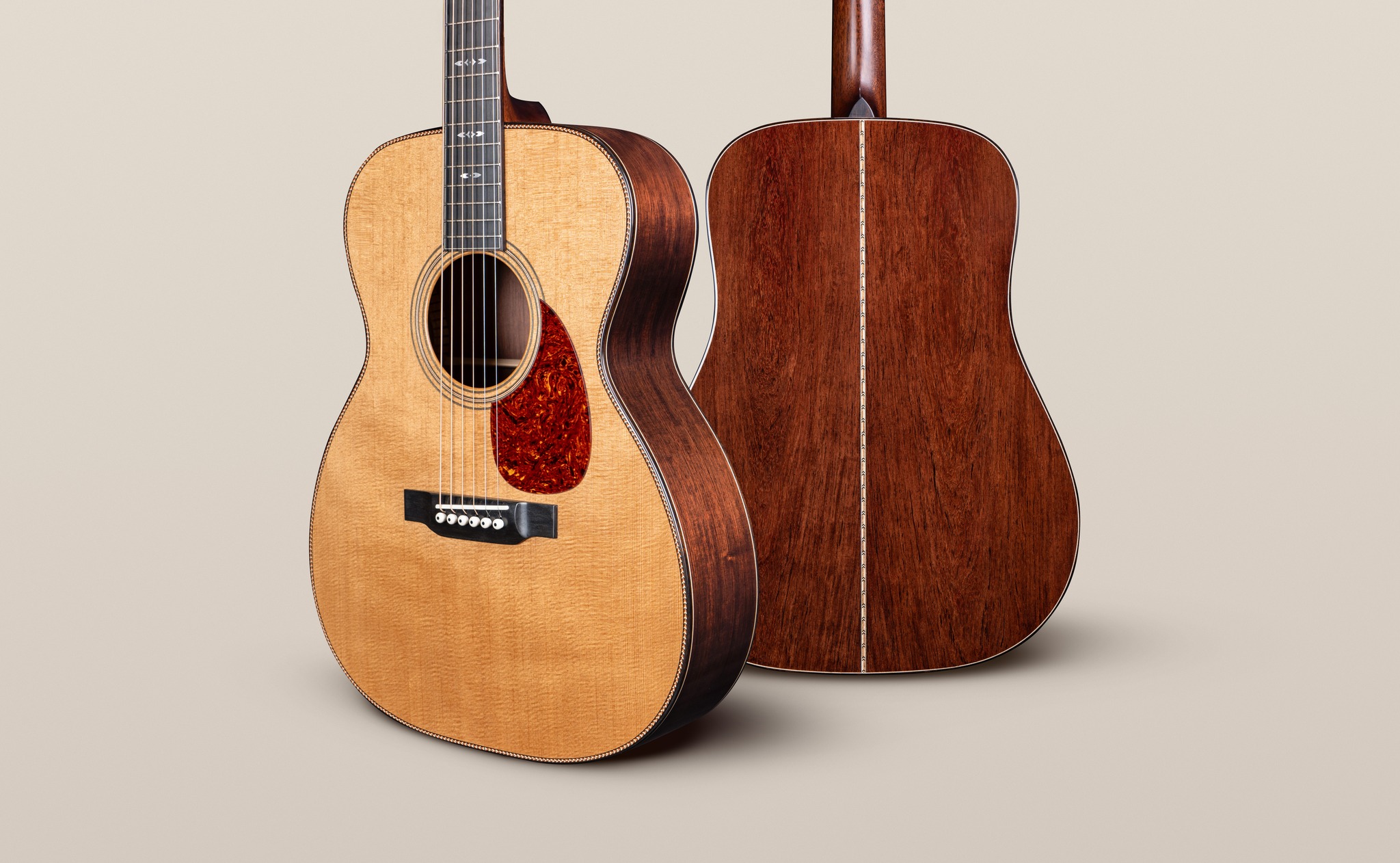
How much does the charm of the bourgeoisie cost and where to get it
Despite Bourgeois being a luxury affair, the dealer network is well-established. I suppose this is where the partnership with Eastman pays off. The fact that there are a number of reputable dealers in the US and Canada is not that surprising, but the dealership in Europe and Asia is also managed in an exemplary manner.
For example, you can buy them in the Stageshop in Budapest, mentioned many times in our series. Ernö and his team have about ten pieces in stock, the rest can be delivered on order. The Nuremberg shop BTM Guitars also has about five pieces in stock. Bourgeois can be found in the most prestigious guitar shops in Europe, such as The Fellowship of Acoustics in the Netherlands or Coda in the UK. In the USA, you'll also find some of the most renowned retailers like Rudy's Music, Heartbreaker Guitars and Chicago Music Exchange.
When it comes to prices, you can get the cheapest models for around 3000 Euros, standard models for around 5000 Euros and top models for around 9000 Euros. As for the exclusive and custom shop instruments, these exceed the 10,000 Euro mark.
Who's on the list?
Given the brand's focus on acoustic genres and the traditional American guitar concept, it's clear that the manufacturer is targeting players of country, bluegrass, folk, Americana, acoustic blues and similar genres. These are also the musical circles Bourgeois brand ambassadors are recruited from.
Doc Watson, the famous North Carolina singer-songwriter, and country legend Ricky Skaggs, who not only plays Bourgeois guitars but also mandolins to complement the guitar range, have contributed to the brand's fame. Bryan Sutton, who carries on the tradition of brilliant bluegrass flat pickers, is another representative.
Not to be seen as a male chauvinist, since Dana is a guy too, let's not forget the famous bluegrass female musician Sierra Hull.
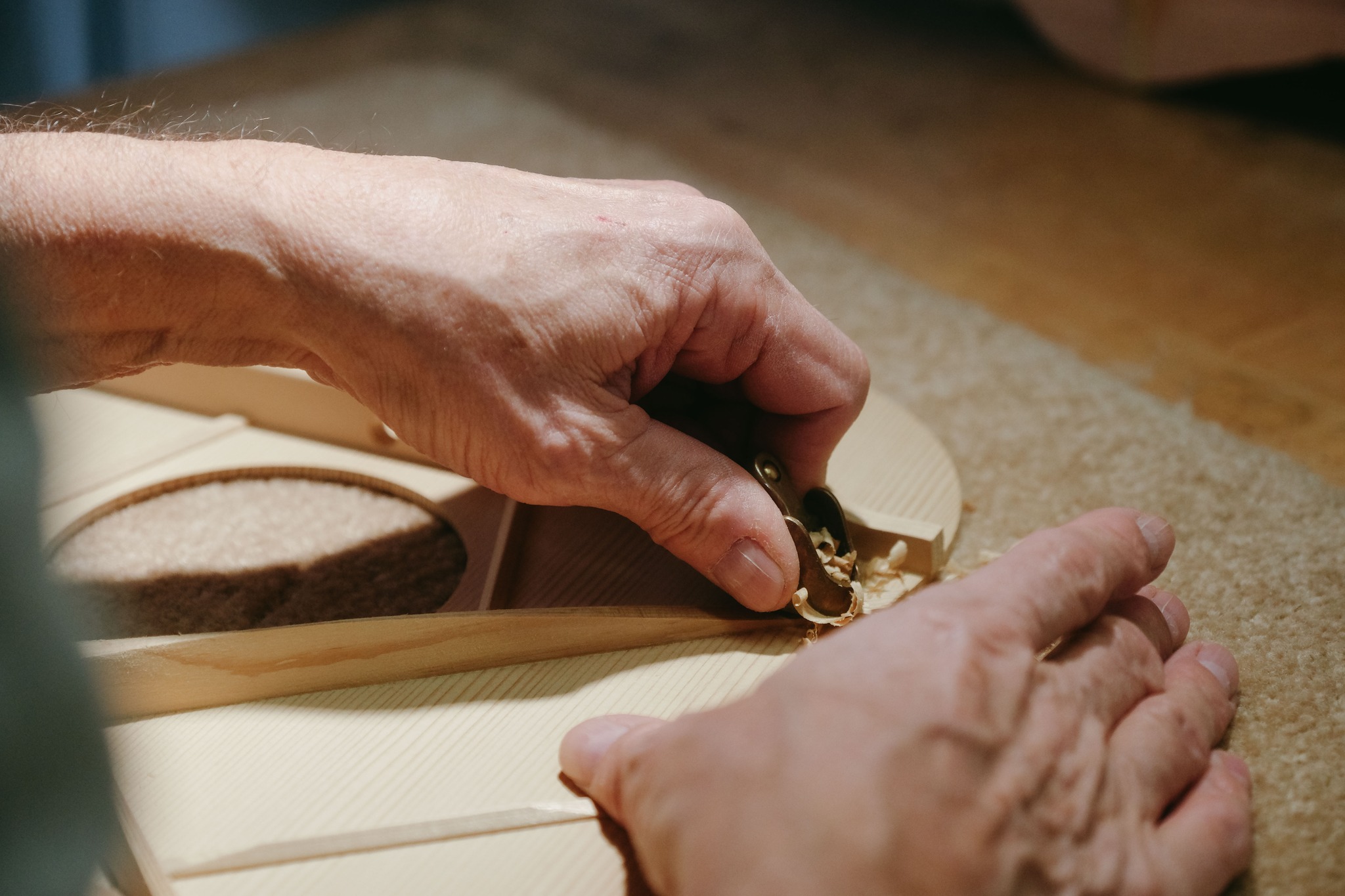
To conclude
It will be interesting to see how the iconic American brand continues to evolve under the auspices of its new Chinese godfather. There's no doubt that Mr. Dana and his team can still make top-notch guitars. The question is how they will cope with the fact that their long-cultivated "expensive" brand is likely to shift to a more affordable sector thanks to the Chinese part of the production, or how this will be received by the "die-hard" fans of the brand.
Eastman has a very good reputation as a mid-priced guitar maker and is referred to as a new-generation Chinese company that has long since moved from stealing ideas from the West to developing and manufacturing original instruments. Yet, it occupies a very different position on the market map than Bourgeois. So let's see what happens.
If you have found an error or typo in the article, please let us know by e-mail info@insounder.org.


